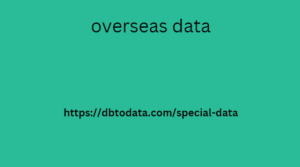OpenAI ’s GPT-3 (Generative Pre-trained Transformer 3) model , released in 2020, was a major milestone in the field of artificial intelligence (AI), specifically natural language processing (NLP). Its successor, GPT-4 , has taken the technology even further, offering a number of compared to its predecessor.
significant improvements and advancements
In this analysis, we’ll explore the key differences between GPT-3 and GPT-4, addressing how these two AI models have evolved and how GPT-4 has expanded the capabilities and potential of language models. Differences Model capacity and size One of the most notable differences between GPT-3 and GPT-4 is their capacity and size.
GPT-4 features a significantly larger number of parameters compared to GPT-3. While GPT-3 had around 175 billion parameters, GPT-4 features a much larger number, although the exact number has not been revealed. GPT-4 to understand and generate text more effectively, and gives it a greater ability to learn and retain information.
Context and coherence GPT-4 has improved overseas data in terms of contextual understanding and consistency compared to GPT-3. This means that GPT-4 is better able to understand the context in which a question is asked or text is presented and can generate answers and content that are more relevant and consistent.
This increase in model capacity allows
This improvement in consistency and context is especially useful in applications such as virtual assistants, customer support, and content generation. Quality of text generation The text generated by GPT-4 is of higher quality than that produced by GPT-3. This is due to improvements in number of parameters, which allows GPT-4 to generate text that is more accurate, relevant, and consistent.
This is particularly valuable in applications such as writing articles, creating advertising content, and generating real-time responses for customer support. Performance on specific tasks GPT-4 demonstrates superior performance in a wide range of specific tasks compared to GPT-3. These tasks include, but are not limited to, machine translation, text summarization, code generation, and sentiment analysis.
the model architecture and the increased
The increase in performance in these areas further expands the potential applications of GPT-4 and its utility in various industries and situations. Adaptability and customization GPT-4 is more adaptable and customizable than GPT-3. This means that it can be more easily adjusted to meet the specific needs of an application or user. This ability to adapt to different purposes and situations makes GPT-4 more versatile and valuable in a variety of contexts and applications.
In summary, GPT-4 represents a significant advancement in the field of artificial intelligence and natural language processing compared to its predecessor, GPT-3. Increased model capacity and size, improvements in context understanding and consistency, quality of generated text, performance on specific tasks, and adaptability and personalization are just some of GPT-4 from GPT-3.
These enhancements to the GPT-4 model further expand the reach and potential of language models across a variety of applications and situations, from customer support and content generation to automation and process optimization across different industries. As AI and language how google’s search algorithms models like GPT-4 continue to evolve, they are likely to continue to transform the way we interact with technology and how we address challenges and opportunities in the business world and beyond.
the key differences that distinguish
The launch of GPT-4 underscores the importance of staying abreast of advances in artificial intelligence and how these developments can impact and drive innovation across a wide range of fields. As technology continues to advance, it is critical that businesses and developers understand and embrace these changes to ensure they remain competitive and can take full advantage of the opportunities offered by models like GPT-4.
Ultimately, the differences between GPT-3 and GPT-4 demonstrate the continued progress in the field of artificial . As language models continue to evolve, we can expect new applications and possibilities to develop that were previously not feasible or practical, allowing us to tackle problems and challenges in more innovative and effective ways.
intelligence and natural language processing
At The Cloud Group we are ready with our wide range of technological services in terms of custom software, artificial intelligence, Big Data services, and custom plugins.
Do not hesitate to write to us or call us on the lines bgb directory we have available for you in the 6 countries where we have a direct presence or call us at +34 910602524 in Spain.

